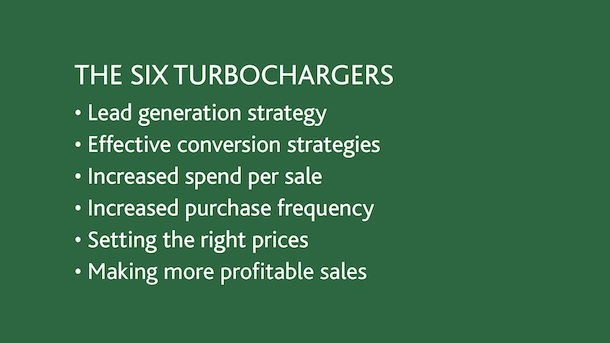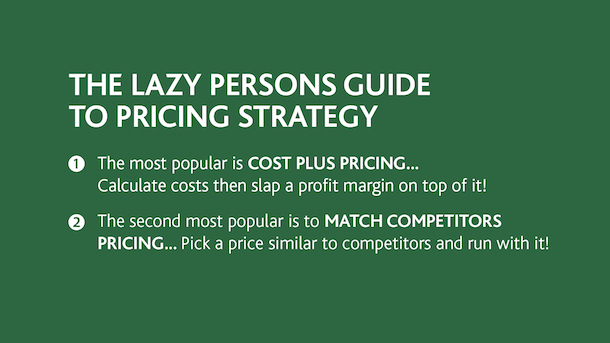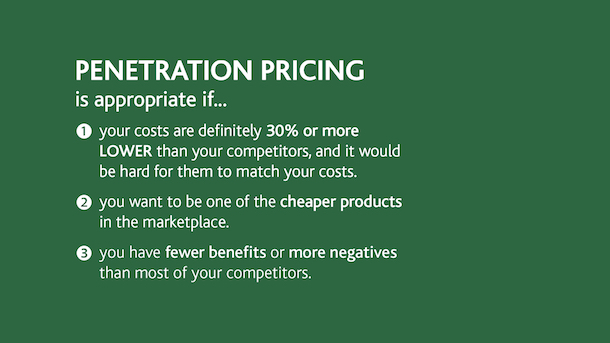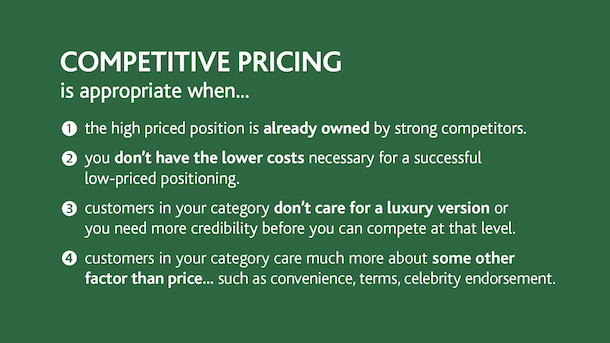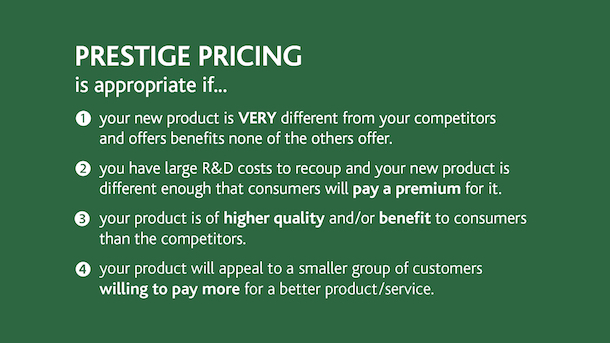Three ways to set profitable prices is the sixth video and article in this series for subscribers only, writes Robert Clay of Marketing Wizdom. And it’s the fifth of six ways you can turbocharge your business results.
Over the past 23 years I’ve done considerable research into what makes businesses market leaders in their niche.
In that time I’ve taught more than 600 established businesses how to harness and apply these principles. And that has enabled them to outsmart the 98% of businesses that don’t. It works!!!
In my previous blog we looked at the fourth of our Turbochargers, ways to increase your purchase frequency. Today, I’m introducing you to the fifth turbocharger, setting profitable prices.
Understand What Your Price Conveys
In a competitive world where price truly matters, it’s critical that you understand what your price conveys to buyers. One of the biggest mistakes you often see in business is the disconnect between product positioning and price.
So how do you ensure that you get your price positioning right first time, to maximise your profitability and achieve the results you’re seeking without wasting money or resources?
Before showing you how to set profitable prices here’s a reminder of all six Turbochargers. the last one will be covering in my next blog:
Master any one of the six profit turbochargers and you can achieve significant business growth. Apply your efforts to all six and each one has a compounding effect on the others. That could boost your revenues by 175% to 365%.
So, what is not to like about that!
The Fifth Turbocharger – Set Profitable Prices
As an entrepreneur, you can get SO close to your business that it’s hard to evaluate your products or services from your potential buyers’ perspective.

I can’t tell you how often people in business look down on or dismiss their competitors’ products and services Yet their competitors usually have the same view in reverse. Clearly, they can’t both be right!
The Customer Perspective
You may love your businesses, but you can become emotionally blinkered about the realities. But your customers are not. So how do you determine the value your customers place your product or service? And how do you set profitable prices?
Let’s take a look here at some of the factors that you should be considering:
- How do THEY see your product/service?
- How do THEY see the offerings of your competitors?
- What do THEY value in your type of product/service?
- How will THEY feel if they pay lower prices? Higher prices? Profitable prices?
- Do THEY perceive a prestige factor in this type of product/service? If not, would they like to?
- To what extent are THEY sensitive about price?
- What do THEY think is a fair price for your product/service?
- What do THEY perceive as being unfair?
If you don’t know the answers why not conduct a customer survey?
Pricing Strategy
Once you’ve established what your customers want and how much they’re prepared to pay for it, you can take the next step. That should be a considered strategy to set profitable prices. It should NOT be what what 98% of entrepreneurs and business leaders do, which is:
- Most popular: Cost Plus Pricing – Calculate your costs then slap a profit margin on top of it!
- Second Most Popular: Match Competitors Pricing Pick a price similar to your competitors and run with it!
So where do you begin when it comes to setting profitable prices?
Whatever strategy you adopt you need to understand what your product or service truly costs in order to establish the foundation on which to build your range of prices.
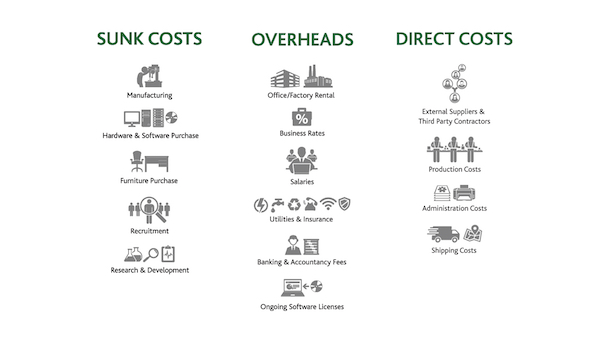
Costs You Should Consider
There are three different types of costs to consider:
- Sunk costs
- Overhead costs
- Direct costs
Your Sunk Costs are the costs you need to pay out to launch a business or a new product/service. They‘re what you spend setting up your business and procedures so that you can either start manufacturing or start selling. An example would be research and development costs.
Your Overhead costs are those ongoing costs that won’t go away regardless of whether you sell any of your products or services. For example, rent, salaries, utilities, accountancy and license fees.
Your Direct costs are those that are directly required for the manufacture of, or provision of your specific products or services.
For example, a publisher has freelance writers and designers fees, photographer fees or image royalties, admin costs such as printing expenses, shipping costs and postage fees.
Your first step should be to understand what your customer wants and what they’re prepared to pay for it. Then, once you’ve calculated the actual costs to your business your next step is to set profitable prices for your product or service.
That means you need to know where to position your offering within your market. Yet that’s something that most businesses never consider.
Price Positioning
People will make many judgements about your product or service based on the price you pick. It sends out signals to your buyers. For optimal pricing you need to be in charge of the signals you’re sending!
For example, pricing a new product with a low price will automatically cause buyers to worry about its quality. Do you want to be the cheap, quality- suspect brand? The high quality brand? Or??
There are only three positioning strategies for your prices:
- Penetration Pricing – Lower than your competitors
- Competitive Pricing – Roughly the same as your competitors
- Prestige Pricing – Higher than your competitors
The key decision you need to make here is the price position you WANT to have. So let’s expand on this a little bit more.
Penetration Pricing
Penetration pricing is when you price your products or services lower than those of your competitors.
Most entrepreneurs default to penetration price positioning because they are afraid that nobody will buy their offering otherwise.
So when is it appropriate to use penetration pricing?
- If your costs are DEFINITELY a % or more LOWER than your competitors, AND it would be hard for them to match your costs.
- If you want to be one of the cheaper products in the marketplace
- If you have fewer benefits or more negatives than most of your competitors
Amazon and Aldi are both examples of companies that run rings around their competition due to their logistics advantages. This allows them to genuinely deliver a better service and decent quality goods. And they can still do that for a much lower price, whilst remaining profitable.
Competitive Pricing
A competitive pricing strategy is the end result of an analysis of your competitors and the relative benefits and negatives of their products and services. You also need to carry out an analysis of what customers want from products/services in your field.
So when is it appropriate to use Competitive pricing?
- When the high priced position is already owned by strong competitors
- When you don’t have the lower costs necessary for a successful low-priced positioning
- When customers in your category don’t care for a luxury version or you need more credibility before you can compete at that level
- When customers in your category care much more about some other factor than price. Those can be such things as convenience, generous terms or celebrity endorsement.
For example Skoda, Kia and Hyundai used penetration pricing to gain a foothold in the market. And as their quality and customer satisfaction ratings started to match and even exceed their competition, they moved to competitive pricing very successfully.
Prestige Pricing
A prestige pricing strategy is where you decide to have the best quality and the highest (or one of the highest) priced products in a market – a luxury or high performance product.
Companies that have the highest price positions in a marketplace are usually smaller, with less sales than companies with lower prices. But they are usually also amongst the most profitable.
So let’s look at when it is appropriate to use Prestige pricing.
- If your new product is VERY different from your competitors and offers benefits none of the others offer
- If you have large R&D costs to recoup and your new product is different enough that consumers will pay a premium for it
- If your product is of higher quality/benefit to buyers than the competitors
- If your product appeals to a smaller group of customers who are willing to pay more for a better product/service
For example, hundreds of hairdryers are available for twelve to twenty-five pounds. But the Dyson Supersonic Hairdryer IS like nothing else like in the marketplace. Being at the forefront of technology, this hairdryer has a digital motor and intelligent heat control. It actually monitors the temperature of your hair as it is drying to prevent any damage to your hair.
The Dyson Supersonic took five years to develop and is of the highest quality. It can be purchased for a whopping three to five hundred pounds, and sells like hot cakes!
Consider this. If you’ve understood exactly what your customer wants and is prepared to pay for it. And if you’ve covered your costs and positioned your offering correctly, just how much more profitable could your business be?
Now that’s something to think about!
What’s Your Preferred Pricing Strategy, and Why? Please Comment Below
What do your customers value about your type of product or service? Which of the three pricing strategies should you be using? Please share your thoughts, observations and ideas in a comment below.
And please also comment if you’ve found this article on setting profitable prices helpful. And if you have any of your own ideas, insights, perspectives and experiences to contribute, please add your comment below.
And let us know if you have any questions relating to setting profitable prices. Or if there are any specific topics you’d like us to cover in videos and articles.
I’m Robert Clay. Thank you for joining me today. I look forward to sharing the sixth turbocharger with you in my next article and video.
Please share your thoughts and add your questions to the comments below. I’ll try to provide as many answers as possible in my future online videos, seminars, workshops, masterclasses and blog posts.
HOW TO UNLOCK YOUR TRUE BUSINESS POTENTIAL
We’ve learned from scaling multiple businesses that there’s a proven formula for success that can cut your learning curve by 80%, put you 5-10 years ahead of your peers and put you on the path to 628% growth in 12 months or less. Here are two FREE ways to unlock your true business potential.1. CLICK HERE TO JOIN OUR FREE ONLINE COMMUNITY, THE “628% GROWTH CLUB,” and see how easily you can apply this powerful formula using real world examples from multiple businesses that have achieved this kind of growth and more. When you join you get a FREE copy of Robert Clay’s new book ”THE 628% GROWTH FORMULA … a proven system for getting big results fast.” We even offer free one2one strategy sessions!
2. CLICK HERE TO JOIN OUR FREE WEEKLY 628% GROWTH ROUND TABLE. This free weekly live round table teaches you how to accelerate your business growth in just 45 minutes a week. It is dedicated to unlocking your true potential with discussion topics that include actionable strategies for accelerating your business growth and helpful tips for achieving this goal. N.B. Availability is limited each week.
 For 25 years Robert Clay has helped hundreds of ambitious entrepreneurs to unlock their true business potential; cut their learning curve by 80%; put them 5-10 years ahead of their peers; and achieve 628% growth in 12 months or less. MEET ROBERT in this video and learn more about his journey from automotive innovator to business transformer.
For 25 years Robert Clay has helped hundreds of ambitious entrepreneurs to unlock their true business potential; cut their learning curve by 80%; put them 5-10 years ahead of their peers; and achieve 628% growth in 12 months or less. MEET ROBERT in this video and learn more about his journey from automotive innovator to business transformer.
